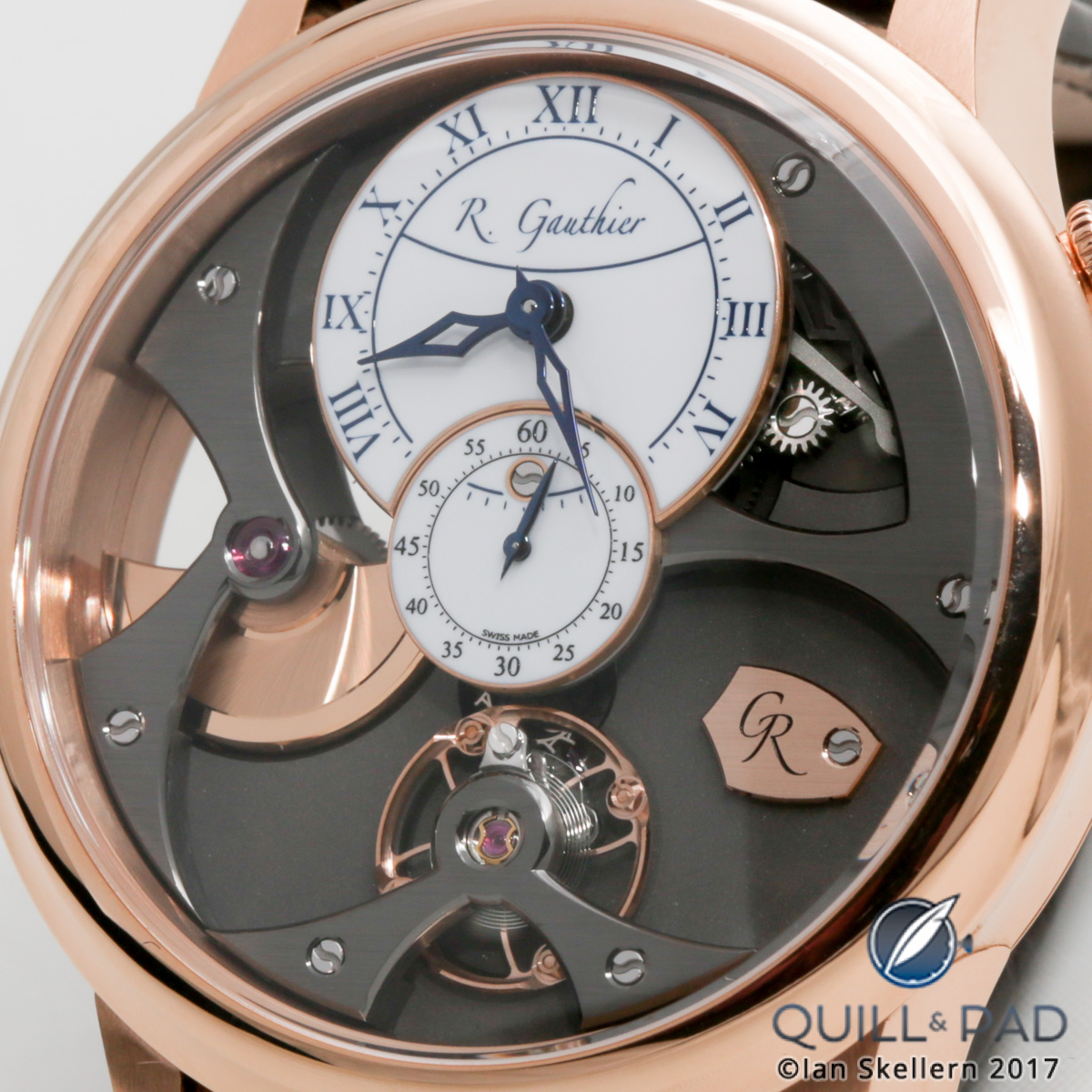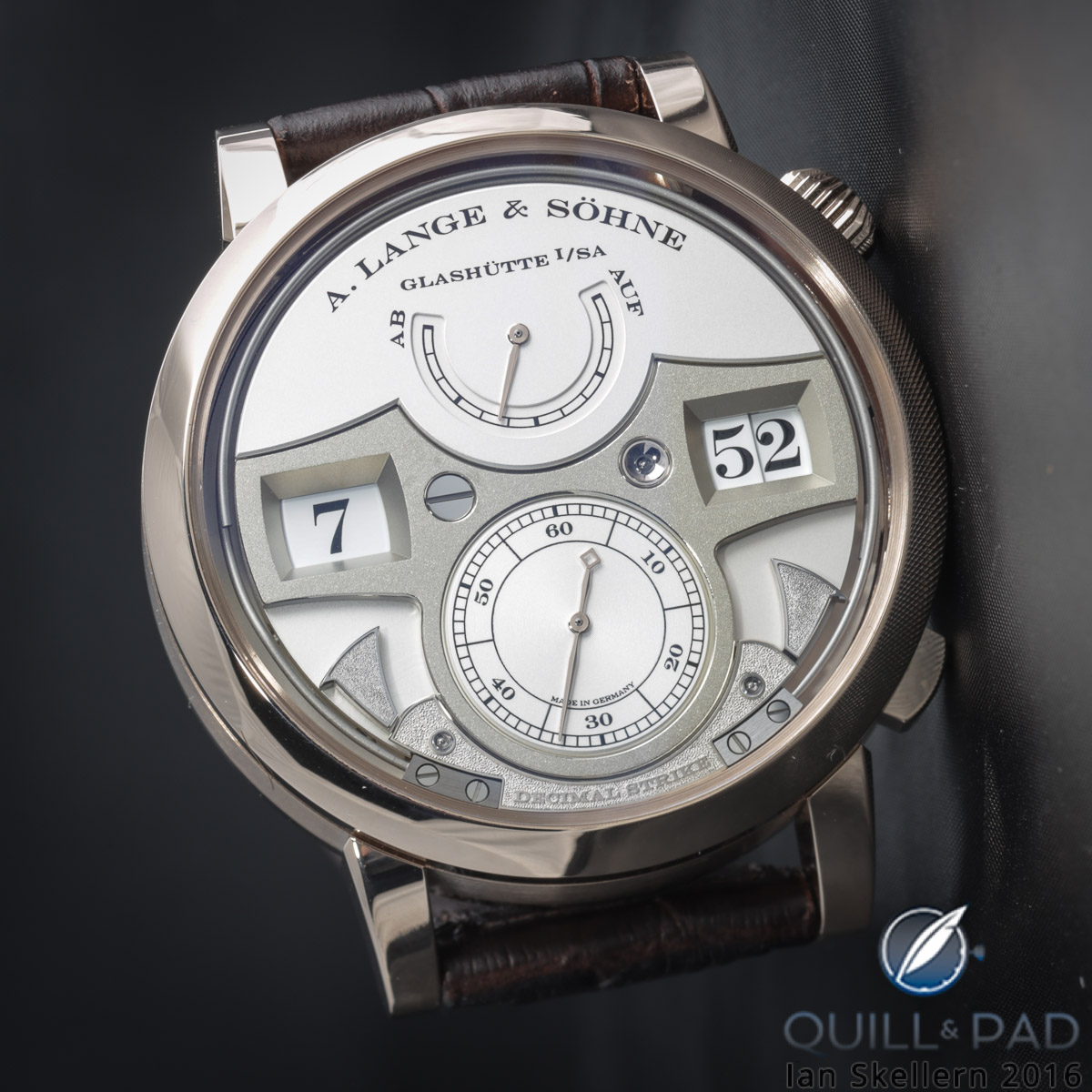
10:37 a.m.
Ten−thirty−seven.
10−30−7.
This is how most people in this day and age experience time. It’s no longer analog, but digital.
Historically, when people learned to tell time, it was by learning how to decipher a clock face by the position of the hands.
By the middle of the twentieth century, people needed to learn how to tell time in two different ways: how to read an analog clock and how to read the new digital clock.
Digital won out as more user friendly. Additionally, there was nearly no learning curve since you didn’t need to translate from the analog face of the clock to numbers. Beside learning the concept of time (as we humans have come to define it), reading a digital clock is pretty straightforward.
But missing from that discussion, and now possibly from the vocabulary necessary for young students, are the older ways to break time down into smaller segments.
With a digital clock, it isn’t immediately obvious that 15 minutes is one quarter of an hour without doing the mathematical equation first. When looking at a clock face, you can visually see that the face can be divided into four parts or two halves.
But when looking at a digital clock you only see numerals, so the quarter and half hours aren’t as useful a delineator (they still are, just not as obvious when learning).
It follows with digital that a natural way to break up an hour would is in units of ten, since they evenly go into the 60 minutes of the hour, not to mention most of us have ten fingers and ten toes (which is handy).
This breakdown is a form of decimal time, and even though the number of hours is not a multiple of ten, to many it feels more natural because of digital clocks.
In the world of haute horlogerie, decimal time is still a rather rare feat, found only on the quirky and ultra-exclusive.
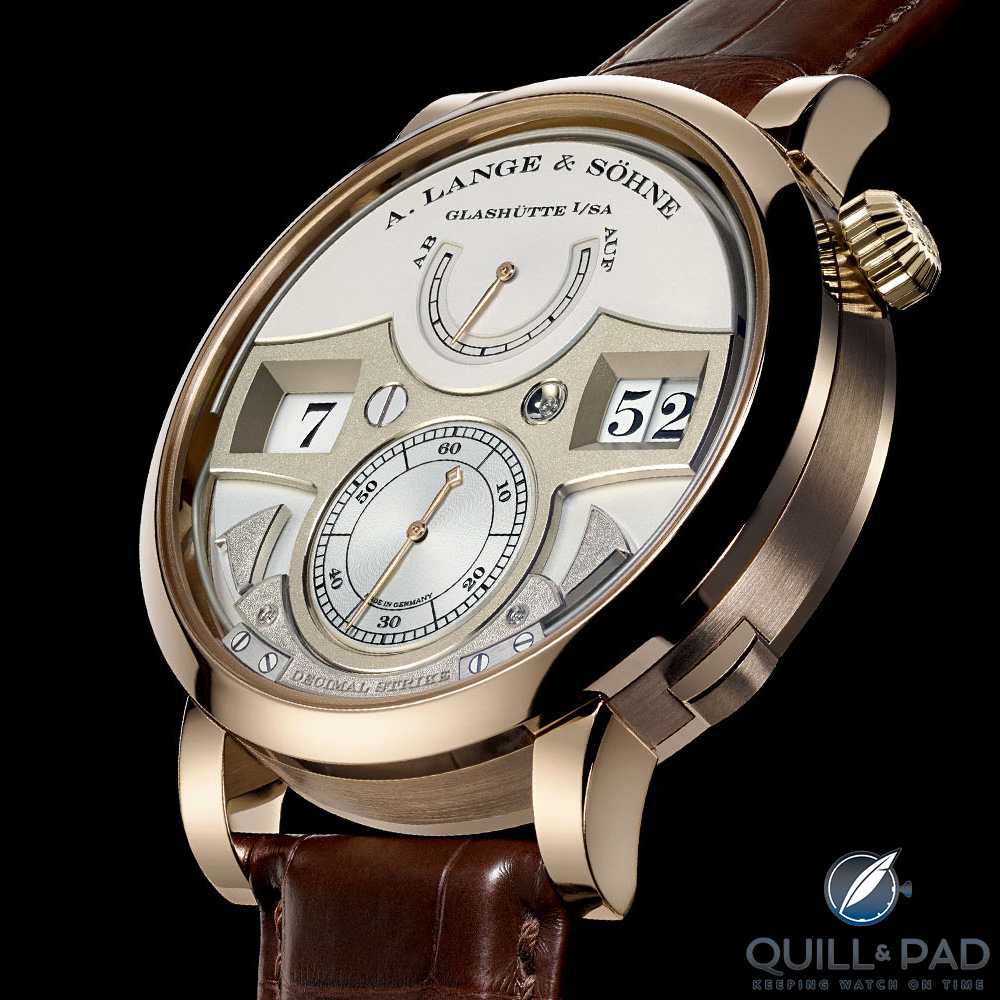
A. Lange & Söhne Zeitwerk Decimal Strike
One of the latest (and in my opinion, best) examples of this is the A. Lange & Söhne Zeitwerk Decimal Strike.
Recap of chiming history
With regard to striking watches, the standard way to break up the chimes for minutes has been a special chime on the quarter hours and then chiming the elapsed minutes up to 14 (one less than the next quarter hour).
Counting to 14 can get a bit lengthy, so there were rare occasions where watch- and clockmakers would make decimal repeaters that strike every ten minutes, lessening the elapsed minutes to count. Of course, in almost every case this would still be combined with a traditional dial, so aside from making it easier to hear and count, it didn’t change the way the average person tells time.
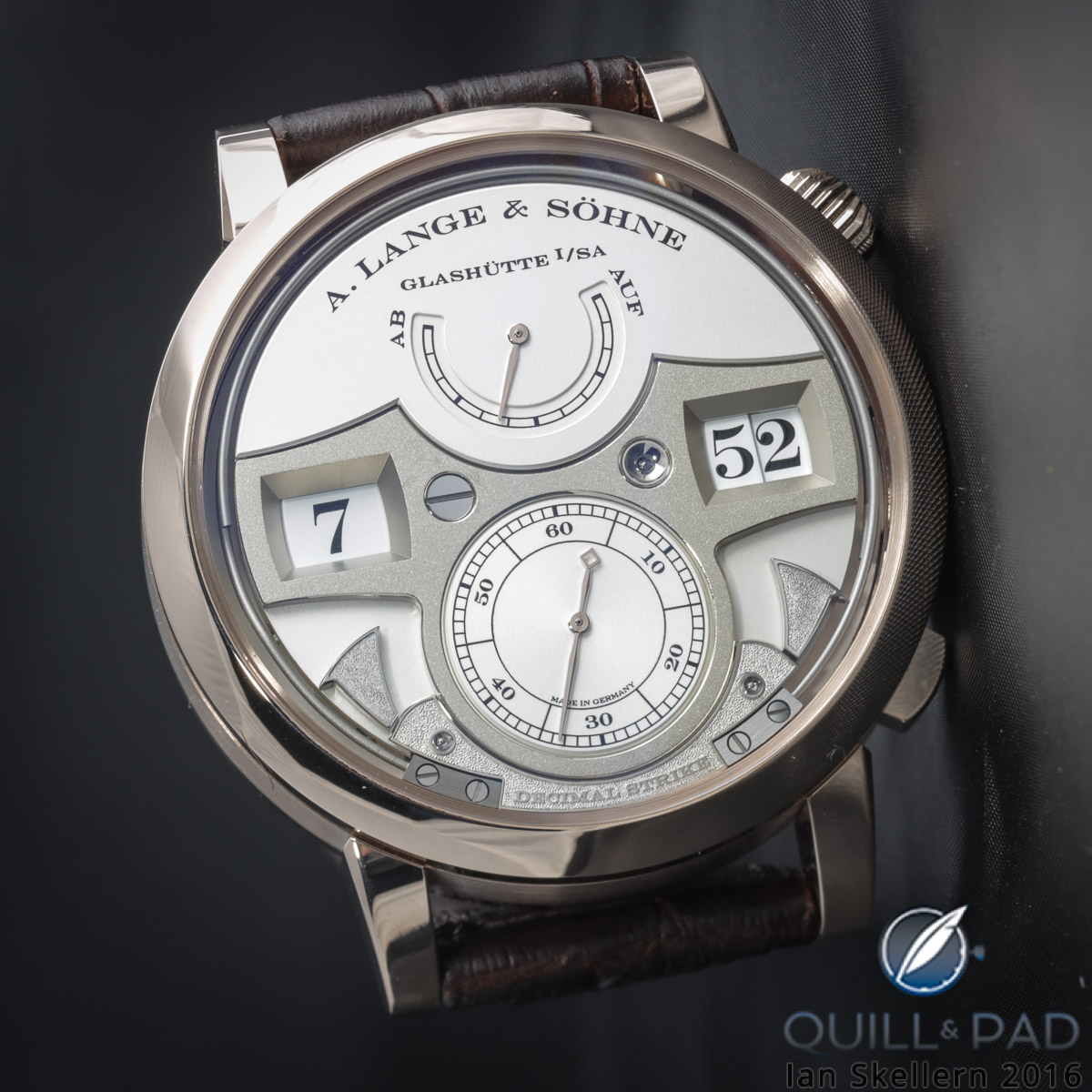
A. Lange & Söhne Zeitwerk Decimal Strike
But when combined with a digital display, like, oh, I don’t know, the A. Lange & Söhne Zeitwerk, the decimal striking mechanism suddenly became whole. It was the missing half of a peanut butter and jelly sandwich if the Zeitwerk was the nutty, oven-roasted peanut butter and the decimal repeater was the delicious strawberry jam.
The marriage of digital display with decimal repeater makes the most sense. Not surprisingly, the Zeitwerk Minute Repeater with decimal strike was a big success, so to follow it up A. Lange & Söhne decided to make the “everyman” striking watch with a decimal strike in passing. And by “everyman” I refer to every lucky man or woman able to purchase one of the 100 limited edition pieces of the Zeitwerk Decimal Strike.
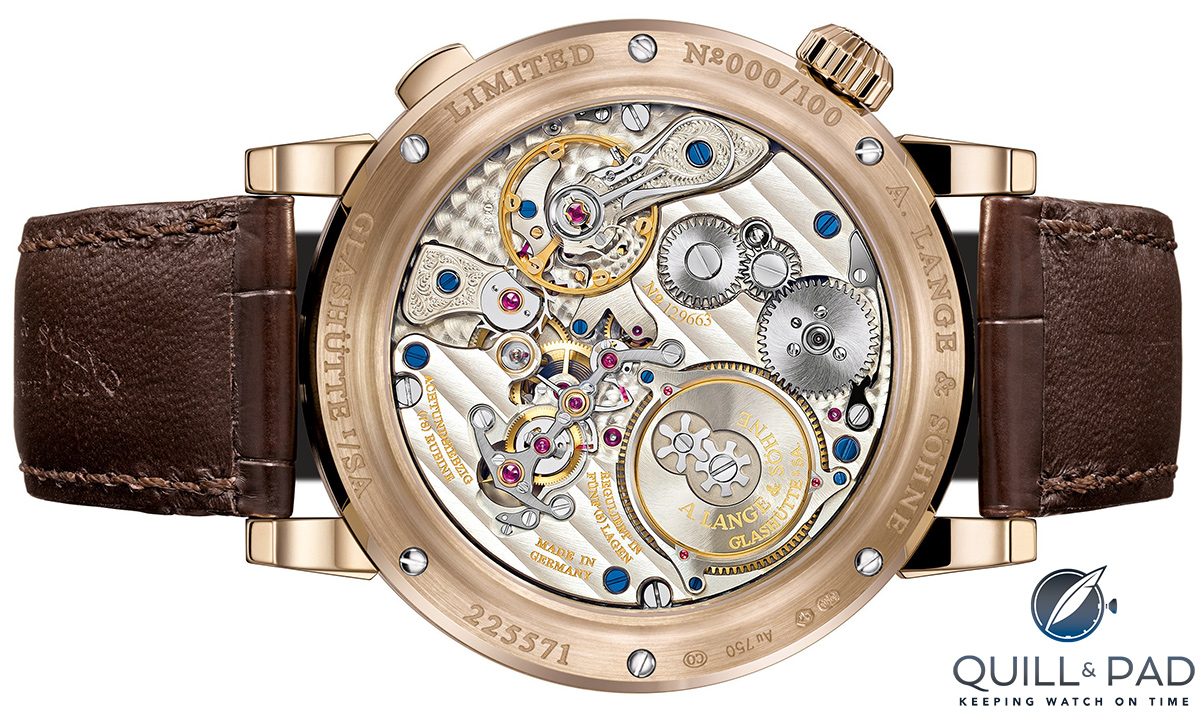
View of the back of the A. Lange & Söhne Zeitwerk Decimal Strike
So what exactly does the Zeitwerk Decimal Strike do that the Zeitwerk Minute Repeater doesn’t do?
Well, it doesn’t chime the time on command or sound out individual minutes, but instead it chimes every ten minutes in passing as well on the hour.
Chime in passing has always been my favorite type of chiming watch for the same reason I love alarm watches; they are actually kind of practical.
I’ll give you the argument that any haute horology isn’t truly practical, but stick with me.
Chime in passing, so much better
The main difference between minute repeaters and chime-in-passing watches is that the minute repeater must be manually activated. This means if you want an audible reminder at regular intervals (if you are focusing on something but need to keep an eye on the time), the minute repeater isn’t very useful for telling you the time without interaction.
Some could argue that this is where grande and petite sonneries come in, to which I would say good luck sourcing one of the rarest striking complications in horology and affording it as well. The minute repeater is the baby brother of the grande and petite sonnerie, and the chime in passing is the baby brother of that baby brother.
It also happens to be much easier (“much” and “easier” being relative words in this context) to construct a chime in passing compared to a minute repeater. The mechanism is significantly more straightforward and requires no aggregator cams or special winding mechanisms.
The simplest form of the chime in passing is a single strike on the hour, which could technically be accomplished with only four extra components (not including screws or jewels) if simplicity is the goal.
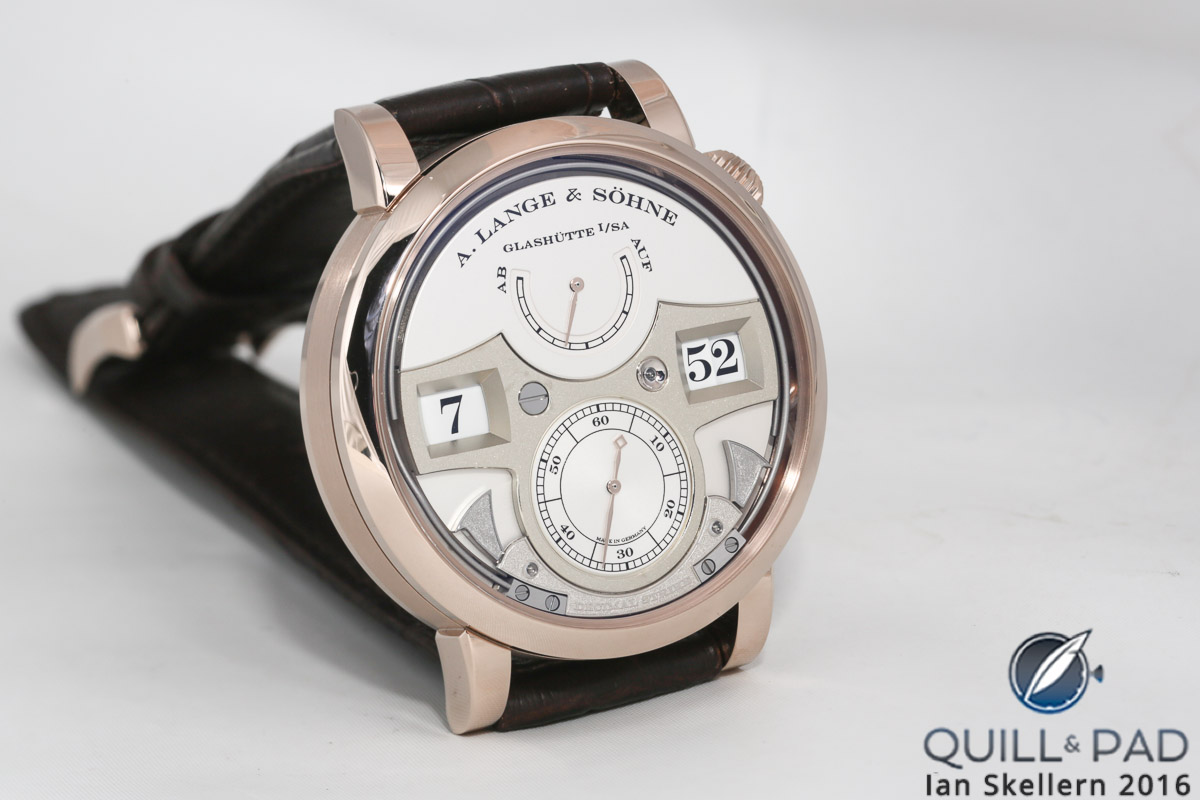
A. Lange & Söhne Zeitwerk Decimal Strike
For the Zeitwerk Decimal Strike, the addition of two chimes and hammers for different tones (a low tone for hours and high tone for ten-minute periods) allowed the gear train one strike every ten minutes and another on the hour with minimal power usage. Additionally, it includes a mechanism to deactivate the chime with the push of a button. And despite all of this, the complexity is still far below that of a minute repeater.
In a way, it is accessible. And it is highly useful.
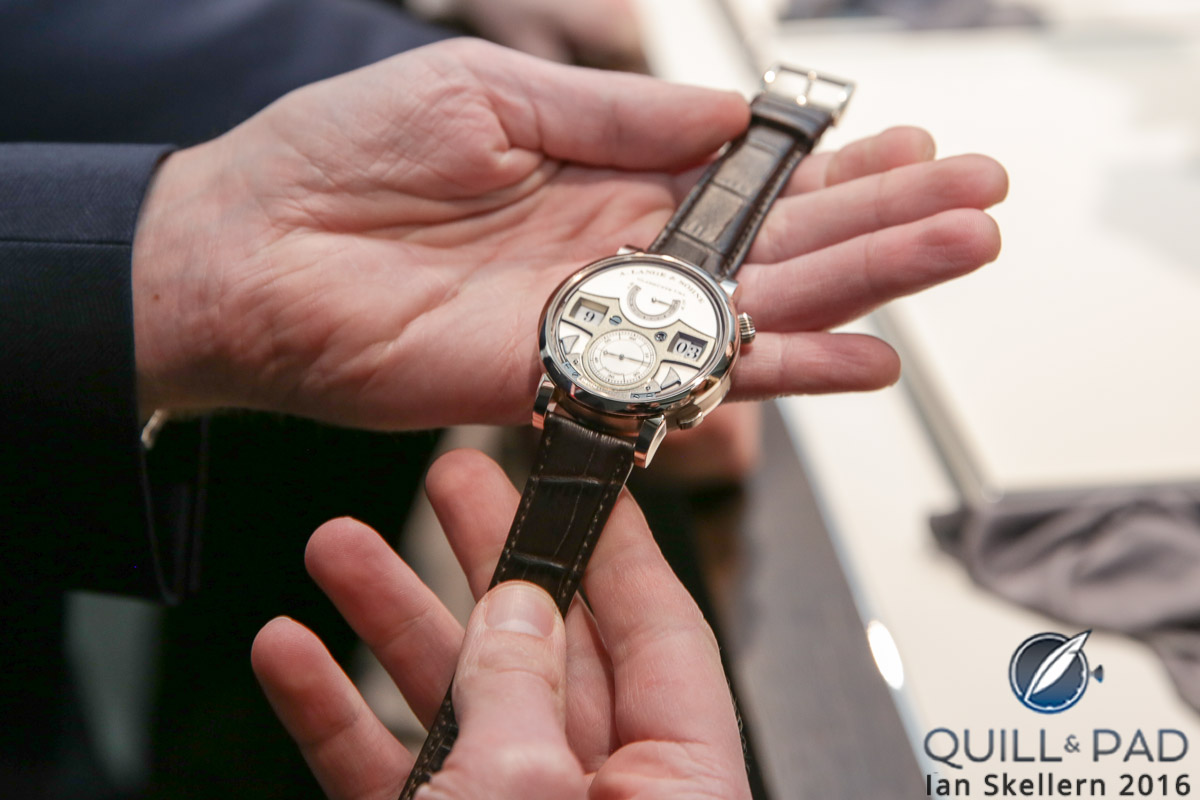
A horological chiming bird in the hand: A. Lange & Söhne Zeitwerk Decimal Strike
Just like an alarm watch, the Zeitwerk Decimal Strike can actually help you keep track of time without the need to interact with it. It is the haute horology version of the Timex I grew up with, sort of. Okay, not really but you get the point.
The original purpose of the minute repeater was similar to a tact watch, telling the time when you couldn’t see the watch, checking the time in the dark. But that function isn’t nearly as useful the rest of the time.
This is why, as usefulness goes, the chime in passing and the grande and petite sonnerie make more sense for those wishing to keep track of time while focusing on something else. Given that grande and petite sonneries are very difficult to produce, very expensive and rather rare, something like the Zeitwerk Decimal Strike would fit the bill for the most functional chiming watch around.
I would even say it matches the alarm and the chronograph for the most real-world applicability. Not bad for the baby brother’s baby brother.
Fraternal twins
Of course the Zeitwerk Decimal Strike has a fraternal twin in the Zeitwerk Striking Time, a watch that functions largely the same way but only strikes the hours and quarter hours, and is not as smartly dressed.
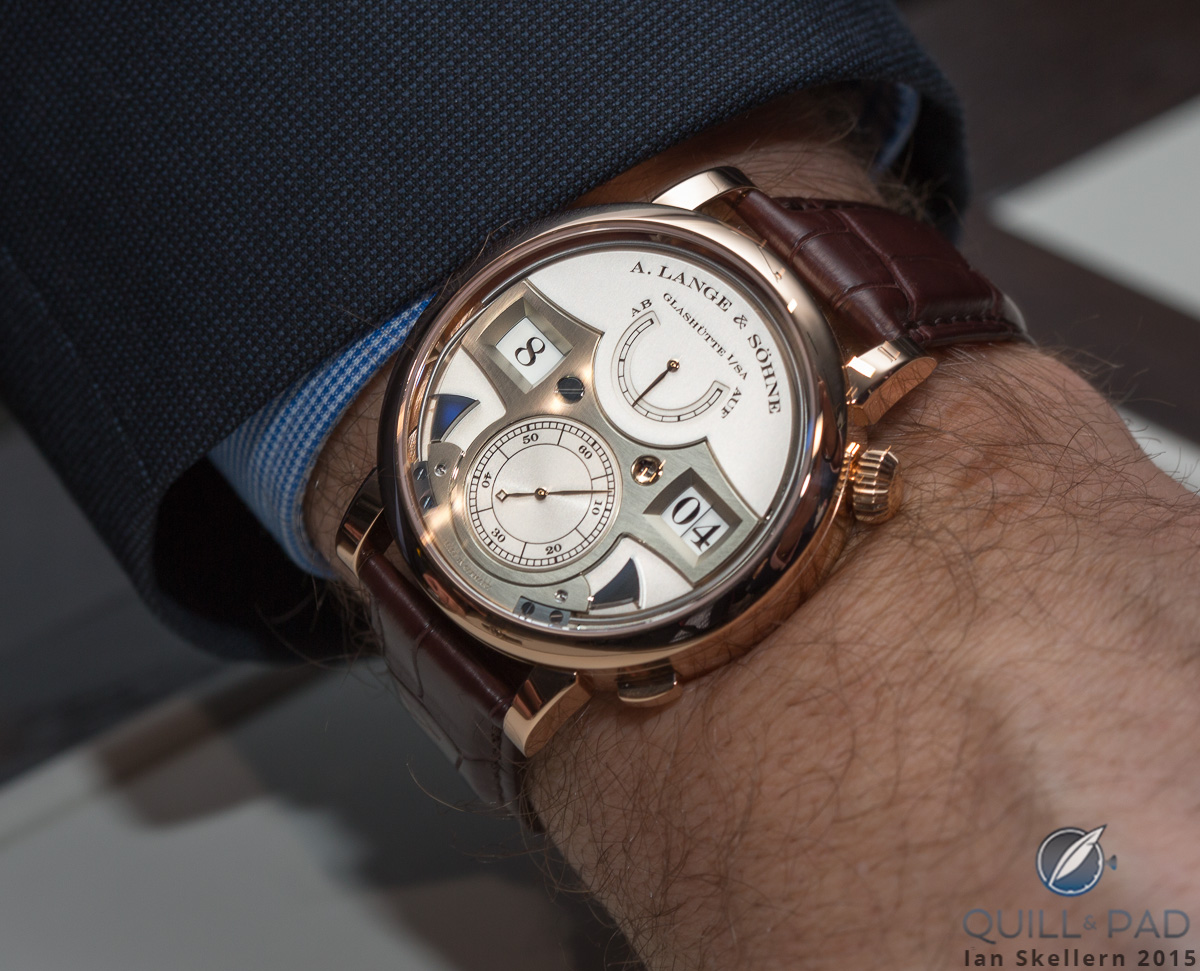
A. Lange & Söhne Zeitwerk Striking Time on the wrist
The Zeitwerk Decimal Strike features A. Lange & Söhne’s own honey gold (a mix between pink and yellow gold) for the case, a frosted digital display bridge, and one of my favorite techniques used by A. Lange & Söhne: tremblage engraving.
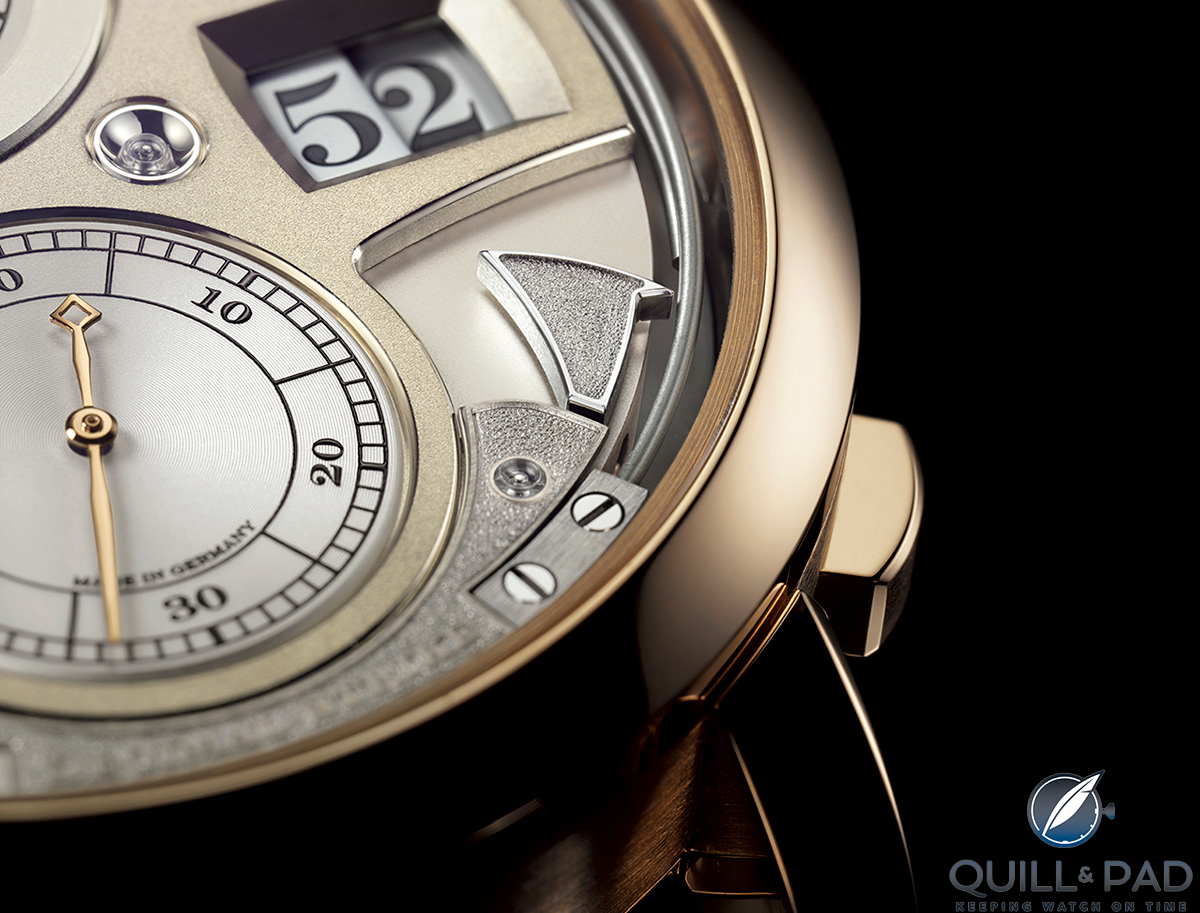
A close look at the beautiful tremblage engraving finish on the hammer and bridge of the A. Lange & Söhne Zeitwerk Decimal Strike
Both of the chime hammers are engraved using this very demanding technique as well as the bridge that holds them. The bridge also has the name “DECIMAL STRIKE” relief engraved as well, reminding us of previous Handwerkskunst pieces.
The subdued nature of tremblage engraving gives the Decimal Strike a stylistic bit of flair compared to its fraternal twin without having it go too far overboard so the watch becomes too fancy. It is, after all, a practical and functional watch.
But aside from these differences, the two watches are a good pair. Each has the chime deactivation button at 4 o’clock, both feature the same base caliber beside the different striking mechanism, and the impeccable quality of finishing and craftsmanship is definitely present on both. It is always hard to argue with the finishing on an A. Lange & Söhne, and the Decimal Strike does not disappoint.
Overall it feels like a natural evolution from the Minute Repeater, which itself evolved from the Striking Time, to show us that evolution does not necessarily mean becoming more complex, but instead better suited to the environment.
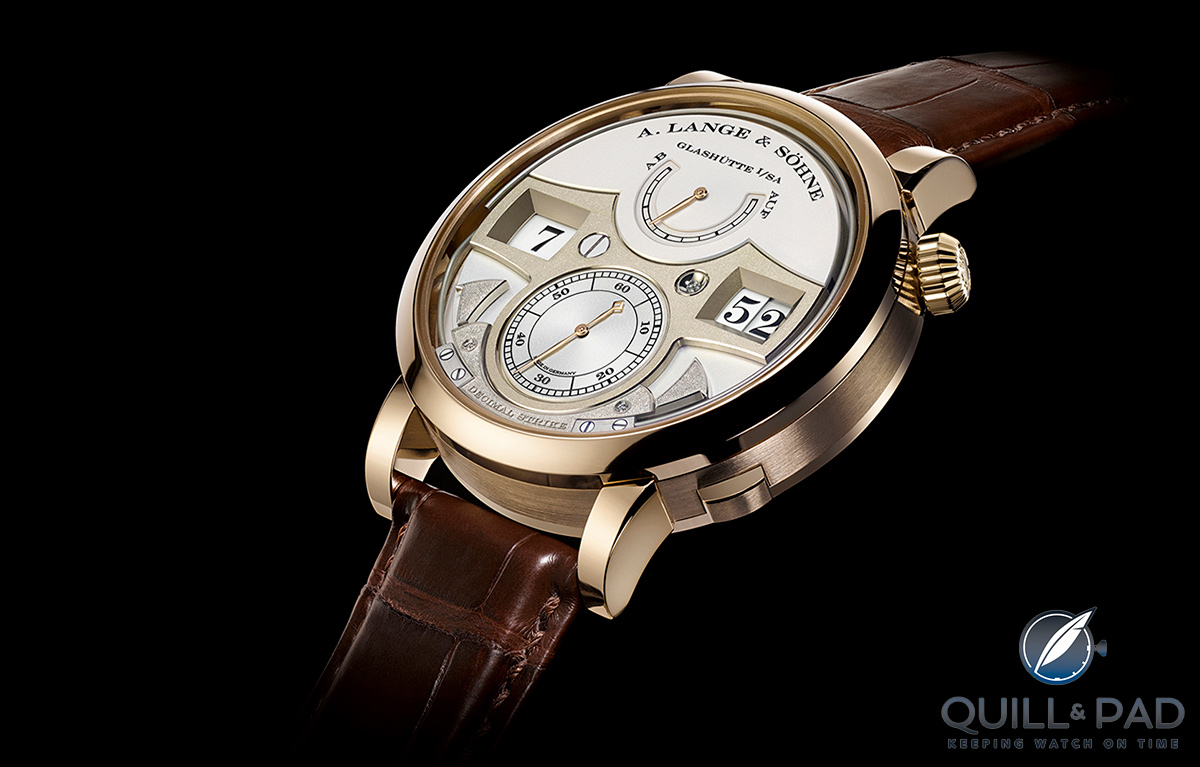
A. Lange & Söhne Zeitwerk Decimal Strike
The Striking Time was an awesomazing release combining two very cool complications, and now the Decimal Strike capitalizes on the decimal heritage of the Minute Repeater and returns to be the most useful chime in passing piece that A. Lange & Söhne could create.
A digital display combined with a decimal chime finally makes the Zeitwerk family the watch for the modern WIS.
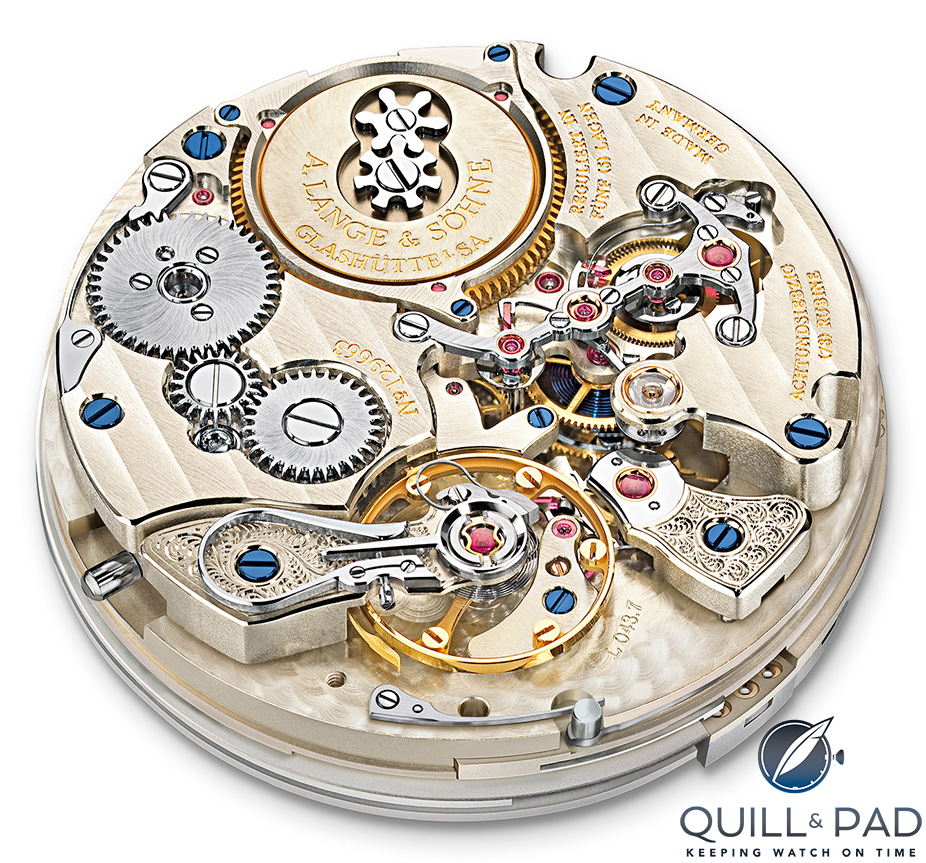
Caliber L043.7 powers the A. Lange & Söhne Zeitwerk Decimal Strike
Of course I am biased in my opinions: to me, the Zeitwerk family of watches outshines the entire rest of what A. Lange & Söhne creates when it comes to straight-up cool looks. The Double Split still has the most amazing movement, but since you don’t wear a watch upside down I’ll take a Zeitwerk any day, hands down.
And out of all of them, the Decimal Strike just might be the most useful of the collection. It takes my heart.
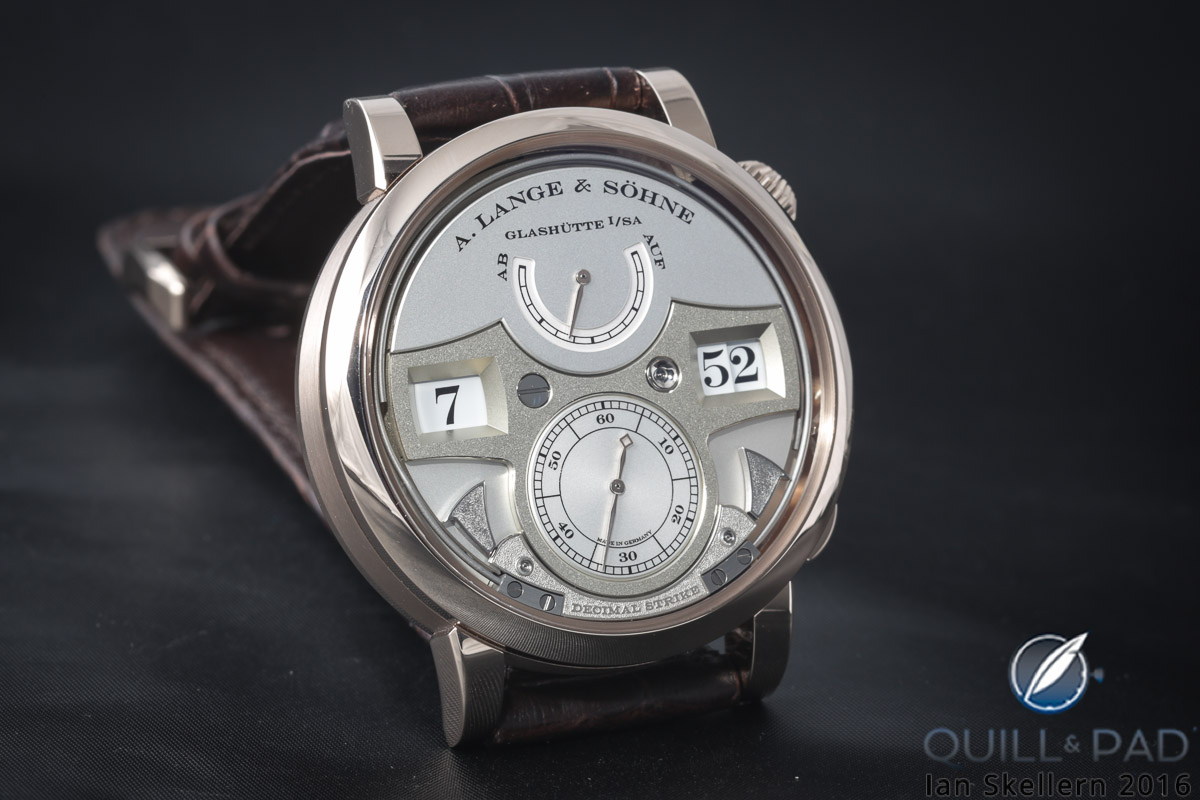
A. Lange & Söhne Zeitwerk Decimal Strike
The Zeitwerk family is the family of complications, so there will be more where this came from, but I think Lange’s engineers will be hard pressed to make something I would more want to wear on a daily basis than this. I could be wrong, though, and if I am, that will be a great day indeed!
While I wait, let’s break it down!
- Wowza Factor * 9.2 Zeitwerk models are always stunning creations, and chiming ones are even better. Having a decimal strike with a touch of tremblage makes this one shine!
- Late Night Lust Appeal * 101 » 99.471 m/s2 The lust appeal for this watch is high, so high that the number is the number of pieces I wish they were making (it is limited to 100) with the number 101 going to a certain watch enthusiast for an attainable price (a guy can dream, can’t he?).
- M.G.R. * 68.9 The triple jumping digital display, the 60 second remontoir for ensured accuracy, the chime in passing: what else do you need to geek out about!?
- Added-Functionitis * Moderate The chime in passing and power reserve indicator are technically the only added functions, as the interesting time display isn’t a complication. This thing still gives heart palpitations from the added-functionitis, though, so I must recommend extra-strength Gotta-HAVE-That cream for the sonorous swelling!
- Ouch Outline * 11.8 Multiple bee stings while trying to catch someone jumping off a ledge! Sometimes people fall on their heads because a few tiny flying creatures decide you don’t have enough holes in you. And of course, it stinks. But I’d do it all over again if it meant getting a Zeitwerk Decimal Strike on my wrist!
- Mermaid Moment * Ten Minutes! Of course it should only take ten jumping minutes and the first chime in passing to get anyone hooked. That’s how long it took me before I started looking at a new tuxedo for the ceremony!
- Awesome Total * 892 Multiply the number of components in the movement (528) with the days of power reserve (1.5) and add the number of pieces in the limited edition (100) for a hammersome awesome total!
For more information, please visit www.alange-soehne.com/en/timepieces/zeitwerk/#zeitwerk-decimal-strike.
Quick Facts A. Lange & Söhne Zeitwerk Decimal Strike
Case: 44.2 x 13.1 mm, honey gold
Movement: manual winding Caliber L043.7
Functions: jumping hours and minutes, running seconds; decimal chime in passing, power reserve indication
Price: €120,000

